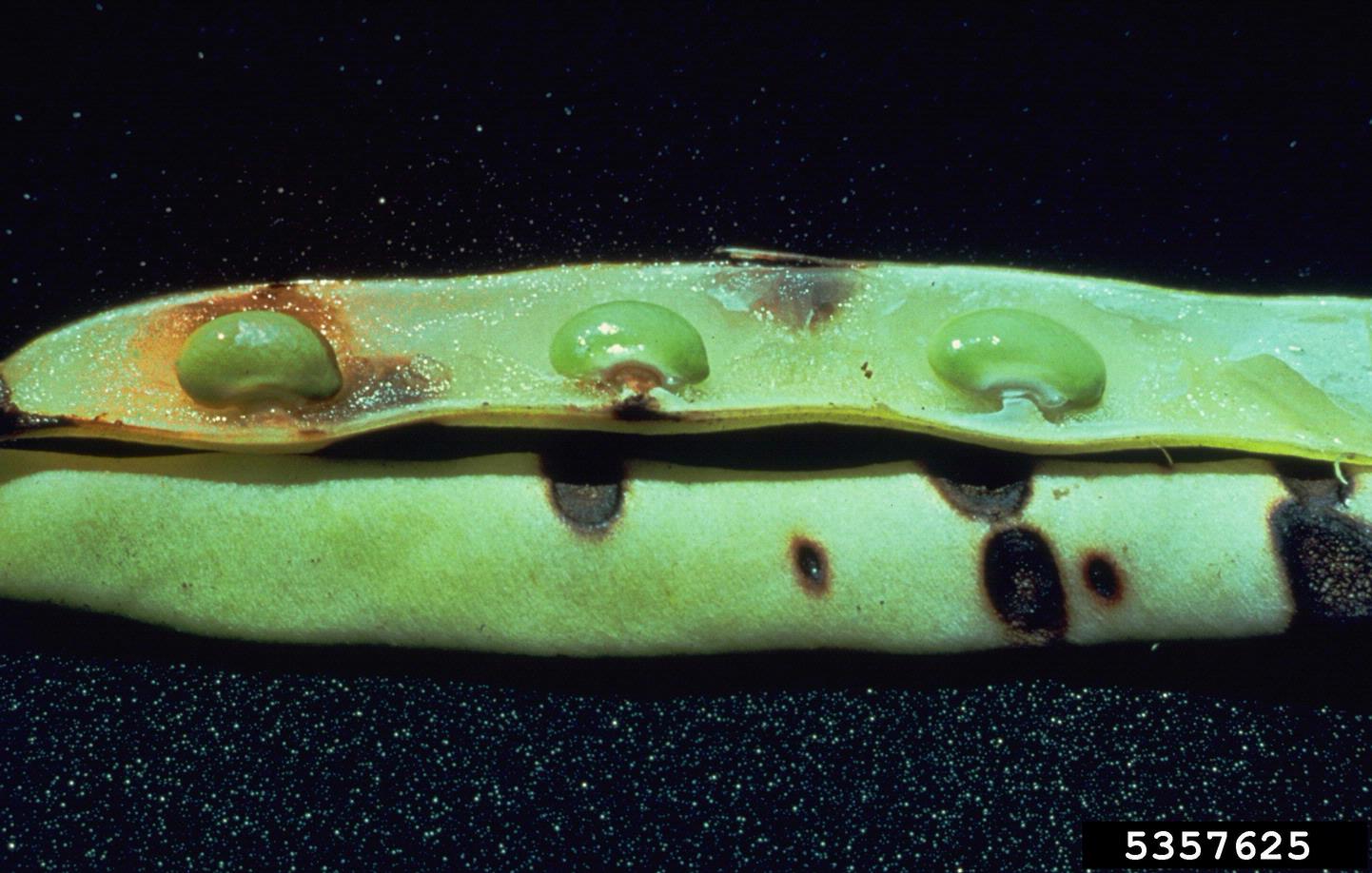Anthracnose Symptoms In Beans – Managing Bean Plant Anthracnose In Gardens


Growing beans can be a simple garden exercise for children who are just starting their first gardens or adult gardeners looking to branch out from nursery raised plants. They’re generally hardy, but have a few diseases that can wipe them out rapidly. Anthracnose is one, but this article will help you better understand how to control anthracnose on beans.
What is Anthracnose on Beans?
It can be incredibly rewarding to grow your own food, especially when you start to move beyond the seedlings you can buy at your local nursery. Beans are usually a pretty easy garden plant to grow directly from seed, since they produce abundantly and have few common problems in most areas. Unfortunately, anthracnose in beans can be a serious problem for some gardeners, but there are steps you can take to protect your plants. Like many fungal plant diseases, anthracnose can present very differently on different types of plants. On beans, anthracnose symptoms may appear at first as black to brown lesions on the cotyledons and stems of plants. As the anthracnose progresses, the lesions spread and pink fungal spores form in their centers. Severely infected plants are sometimes killed or suffer from girdling of leaves and stems; pods and seeds will show distinct circular red-brown lesions. Anthracnose is primarily a seed-borne disease in beans, but when conditions are wet and temperatures are cool to moderately warm, spores will spread readily to uninfected plants as well. These spores can come from active plant infections nearby or from spores that were lying dormant on bean foliage from past years.
Managing Bean Plant Anthracnose
Treating anthracnose on bean pods is a losing battle. If your pods are already infected, it’s too late to salvage them, though you can slow the spread of anthracnose in your current and future bean plantings. There are no known chemical treatments for anthracnose, but cultural control of bean anthracnose is fairly effective. First, always allow beans to dry completely before touching or entering a bean planting. Anthracnose spreads rapidly in the presence of water, so by eliminating this important vector you can often protect the plants that haven’t been infected yet. Secondly, be sure to always clean the tools you’re using in the bean garden before using them elsewhere. Spores can hitchhike rides on these gardening implements. If you’re trying to salvage this year’s harvest, wait for a very dry day and remove as many infected plants as you can find. This will remove potential infection points, giving you a better chance of having some kind of harvest. When anthracnose appears early in the growing season, you can often replace bean plants you’ve pulled with new seed, provided you were careful to collect all the debris. Do not collect seed for sowing next year, since the seeds stand a high chance of vectoring fungal spores. In subsequent seasons, spread your beans further apart to make it more difficult for raindrops and animals to transmit anthracnose between plants. Also, practicing a two-year crop rotation with a green manure can both help to bulk up the soil and break the infection cycle. There are a few anthracnose-resistant beans on the market, but none are resistant to all anthracnose strains. If you want to experiment with anthracnose-resistant beans, be patient and record your findings so you’ll know which varieties are best suited to your local conditions.
Gardening tips, videos, info and more delivered right to your inbox!
Sign up for the Gardening Know How newsletter today and receive a free copy of our e-book "How to Grow Delicious Tomatoes".

Kristi Waterworth was a regular contributor to Gardening Know How for many years, answering countless queries on plant pests and diseases.
-
 My Homemade Orchid Fertilizer Always Brings More Blooms – Here's The Easy Recipe That Transforms Plants
My Homemade Orchid Fertilizer Always Brings More Blooms – Here's The Easy Recipe That Transforms PlantsScientist-turned-gardener Mary Ellen Ellis shares her tried-and-tested DIY orchid fertilizer recipe, plus more ingredients to try for healthy, happy plants.
By Mary Ellen Ellis
-
 Looking For Plants To Give You The Soft And Fuzzies? Try These 5 Fuzzy Leaf Plant Options
Looking For Plants To Give You The Soft And Fuzzies? Try These 5 Fuzzy Leaf Plant OptionsLovers of texture, drama, silver foliage and tactile plants will adore these special sensory garden additions. These fuzzy leaf plant options will leave you all aglow
By Susan Albert